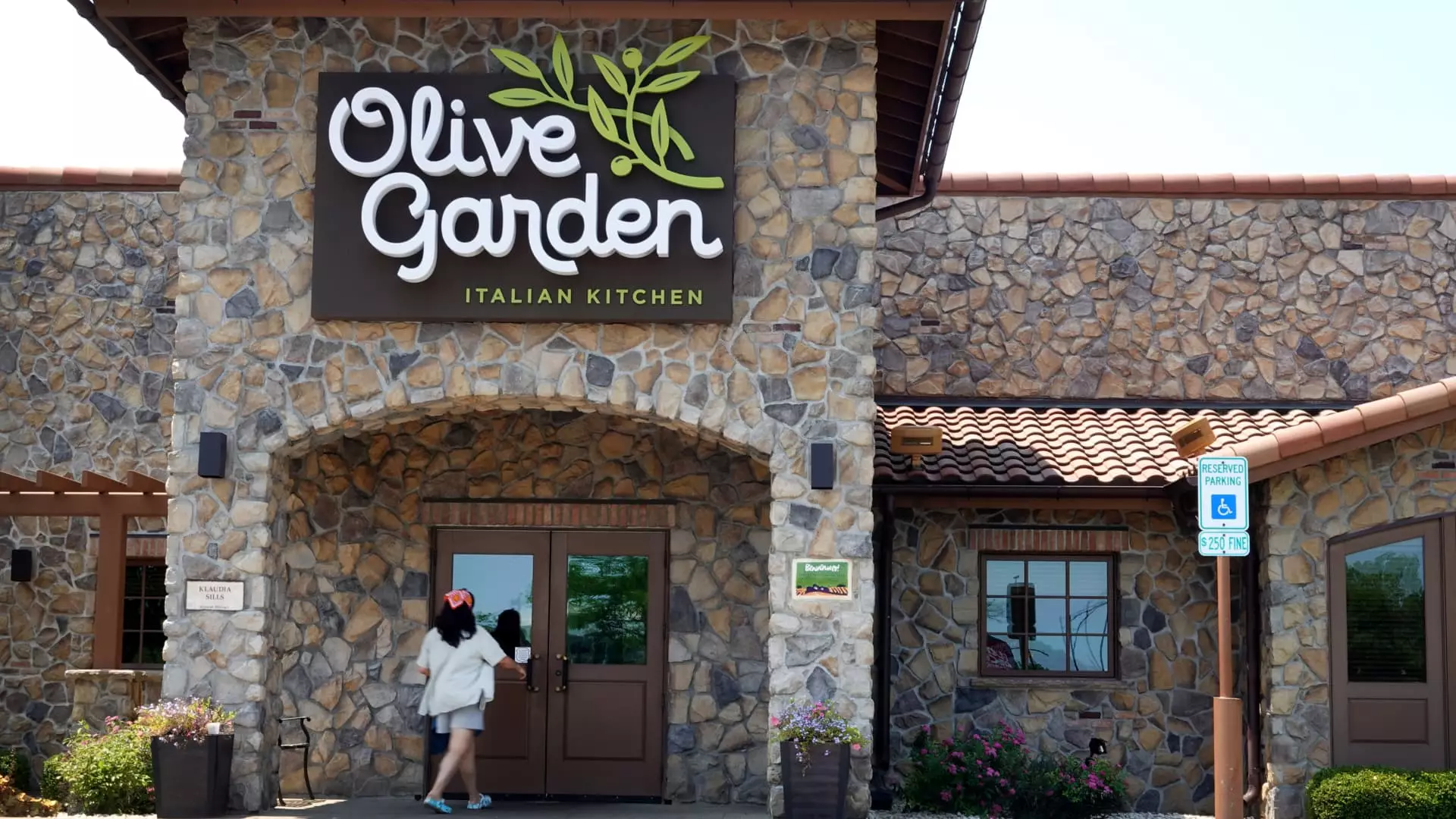Darden Restaurants recently announced its quarterly earnings, revealing results that did not align with market expectations. For the three-month period ending August 25, the company reported adjusted earnings per share (EPS) of $1.75, falling short of Wall Street’s anticipation of $1.83. Revenue also lagged behind forecasts, clocking in at $2.76 billion against a projected $2.8 billion. Notably, the company reported a net income of $207.2 million, which, while an improvement from $194.5 million a year earlier, raises questions about its growth trajectory given the context of declining sales at flagship brands like Olive Garden.
Despite the disappointing figures, Darden CEO Rick Cardenas expressed confidence in the company’s capacity to recover. He emphasized the importance of prioritizing long-term sustainability over short-term gains, stating, “I firmly believe in the strength of our business.” This sentiment, though uplifting, may seem disconnected from the immediate reality facing the brand teams as they strive to boost customer engagement and rectify declining sales figures. Such optimism can sometimes be interpreted as a lack of acknowledgement of pressing challenges, potentially leading investors to question the company’s strategic direction.
Olive Garden, an iconic staple within the Darden portfolio, struggled significantly during this quarter, with a reported decline of 2.9% in same-store sales. The brand is set to revive its popular Never Ending Pasta Bowl promotion, a strategy that aims to lure customers back. However, this considerable reliance on promotions raises concerns about whether the brand can sustain its customer base long-term. Similarly, the fine dining segment, which encompasses high-end offerings like Eddie V’s and The Capital Grille, saw an alarming drop of 6% in same-store sales. These results highlight potentially deep-seated issues in consumer dining preferences, especially in a post-pandemic landscape.
In contrast, LongHorn Steakhouse emerged as a beacon of strength within Darden’s operations, showcasing a commendable same-store sales growth of 3.7%. As one of the standout performers, it reveals a crucial insight into shifting consumer dynamics, suggesting that affordability and perceived value might be key factors influencing dining choices as guests navigate through economic uncertainties. This differential in performance across brands underscores the necessity for Darden to assess and revamp its strategies for underperforming divisions effectively.
Despite a challenging fiscal first quarter, Darden has maintained its full-year forecast, projecting earnings per share from continuing operations to be between $9.40 and $9.60 and estimating net sales between $11.8 billion and $11.9 billion. This steadiness in forecasting may be indicative of a management team that believes in the long-term viability of the brand’s broader strategy, even as it navigates current challenges. However, investors and stakeholders alike will closely monitor the effectiveness of the actions taken to revitalize underperforming sectors and the overall market reception in the coming months. As Darden moves forward, it will need to reconcile its optimistic projections with substantive operational improvements to align with the evolving preferences of diners.

